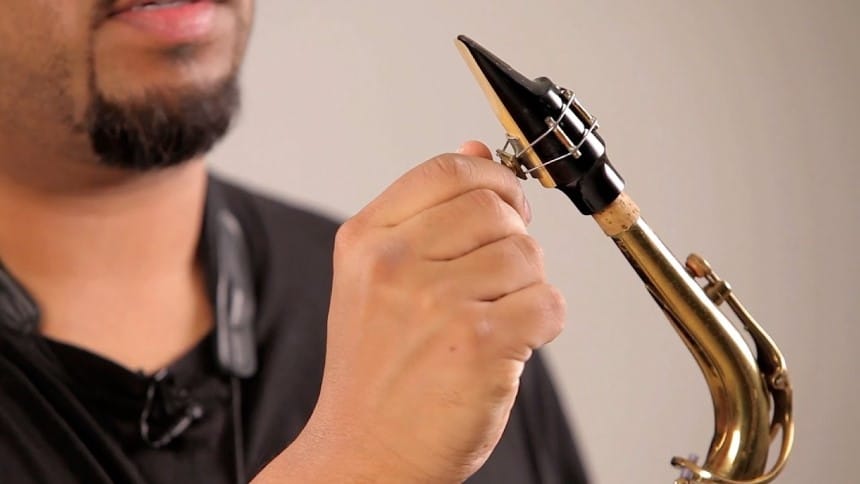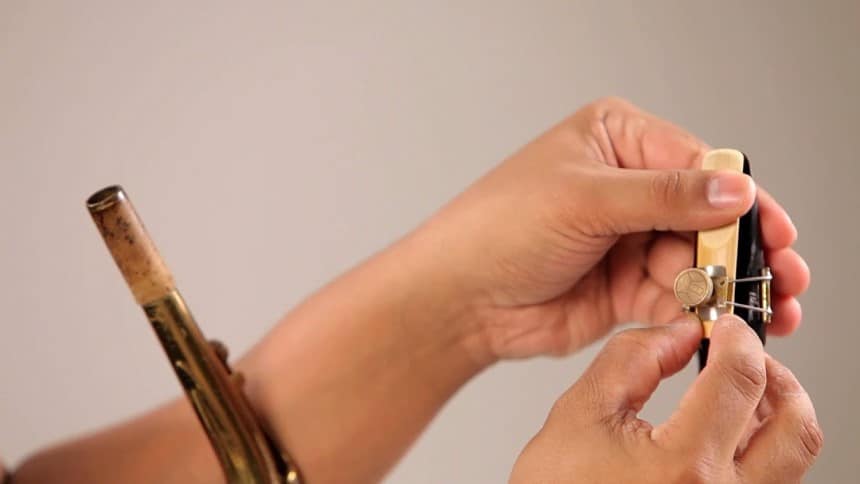Tuning a saxophone is not as complicated as it looks. The tuning act is relatively straightforward and can be achieved by adjusting how much higher or lower the mouthpiece is on the cork. In a general sense, the lower the mouthpiece is down the cork, the sharper and higher-pitched the sound produced will be. By extension, the higher up the cork the mouthpiece is located, the flatter the sound produced will be. Thus, all you truly need to learn how to tune a saxophone is music.
From brand to brand, saxophones might vary in the length of the tube, and as such, there is no specific length measurement for how far down the mouthpiece should be that would produce the same notes in all saxophones. This is where your knowledge of music comes in. you would have to adjust the mouthpiece until the sound produced is just right for you.
 Tuning a saxophone to concert notes
Tuning a saxophone to concert notesOne of the first precautions to take before trying to tune a sax is to warm it up. This is because the instrument’s horn is metallic, and as such, the characteristics of the metal and, consequently, its sound change with temperature.
This would mean that tuning a saxophone before it is sufficiently warmed up would most likely give a different sound than the one you are likely to hear after playing for a while. Usually, the change in sound is going to be an increase in sharpness.
The tuner functions by measuring the sound waves coming into it and giving readings indicating whether the sounds produced are too flat or too sharp. However, before you can use a tuner, certain things have to be put in place. For one, you have to make sure that the tuner is calibrated to a frequency of 440hertz. This is only a one-time precaution and provided it isn’t changed, and the tuner would always be calibrated the same way whenever it is switched on.
It would even be more ideal if you could purchase or access a tuner specially designed for saxophones. This is because a standard tuner can still misread a note. After all, it might be designed to work better for instruments on other keys. For example, the A note on a baritone sax may be read as a C on some tuners, and in the same vein, the A note of a tenor saxophone may be read as a G.
Next up in tuning your instrument is selecting a note that is suitable for you to begin with. Due to the length of a saxophone tube, most beginners are advised to use notes in the middle register. For instance, an F is an ideally positioned note. This is because the instrument would probably never be entirely in tune for the bottom, and the right way to keep the sound respectable all-round is using a note from the middle register.
After running all the notes, rerun through them and ensure that the tuning is okay for all. It would not be easy to tune all notes correctly, but the closer, the better. Your knowledge of music can also come in handy here. If a tuner is wrongly reading specific notes, it will pay to be reasonably proficient at recognizing certain notes. For more ease in handling and using saxophones, most beginners are better served by beginner saxophones.
If a saxophone is proving hard to deal with, you might need to make a few changes or at least revamp all the accessories in use to make handling the instrument less of a chore. The goal should be to pick compatible accessories that would produce a more consistent sound.
 The same considerations should go into selecting a reed. The reed could be hard or soft, but if you are still using your beginner saxophone, you should consider a soft reed. Soft reeds are guilty of producing mostly flat sounds, but their nature would make it easier for a beginner to flit between flit and sharp sounds as the need may arise.
The same considerations should go into selecting a reed. The reed could be hard or soft, but if you are still using your beginner saxophone, you should consider a soft reed. Soft reeds are guilty of producing mostly flat sounds, but their nature would make it easier for a beginner to flit between flit and sharp sounds as the need may arise.If you find that your sax Trusted Source BBC Radio 4 - Front Row, Saxophonist John Harle, The Salesman reviewed, Singer-songwriter ESKA, Video - John Harle gives John Wilson his first saxophone lesson. Highlights include a new rendition of the Eastenders’ theme tune! www.bbc.co.uk wasn’t easy to tune or use the first time you tried it, you are not alone. If you still struggled to tune all the notes to a passable extent after your hundredth time of trying, you’re still not alone.
The truth is that learning how to tune a saxophone is the easy part, and this ease is most exemplified by how straightforward it would be to tune a single note. But as you work on the other notes and try your hands on the scales, you must work on your ear and depend less on the tuner because this is the only way your practice could improve your perception of music. So, if you couldn’t figure out your saxophone, I hope this little piece helped to shed light on other ideas you can implement.